Hummingbird Fall 2024 Southward Migration
Some Migrate, Some Do Not
|
Many hummingbirds spend the winter in Central America or Mexico, and do not migrate. For example, in Honduras as many as 42 species of hummingbirds can be found, mostly non-migratory. And others further north in the United States, in areas like California and the upper Pacific coast, do not migrate.
However, some hummingbirds are migratory creatures, and migrate north in the warmer months to their breeding grounds in the United States and Canadian provinces. They can arrive as early as February in the southern U.S., and move into areas further north later in the spring. The first arrivals in spring are usually males.
The Fall Migration Triggers
Although there are differing views in the birding community as to what triggers the start of fall migration, it is generally thought that hummingbirds sense changes in daylight duration, and declining numbers of flowers, nectar and insects.
Instinct, their internal biological calendar, and cooling weather conditions also play a role in making the decision to migrate.
For the migrants, by late summer and early fall, breeding is completed and the southward migration back to Mexico and Central America is underway.
The male hummingbirds are the first to leave, as early as mid-July, followed later by the females. Lastly, the young hummingbirds begin their migration, for the first time, alone to navigate the long trek to their winter grounds.
Making the Trip South
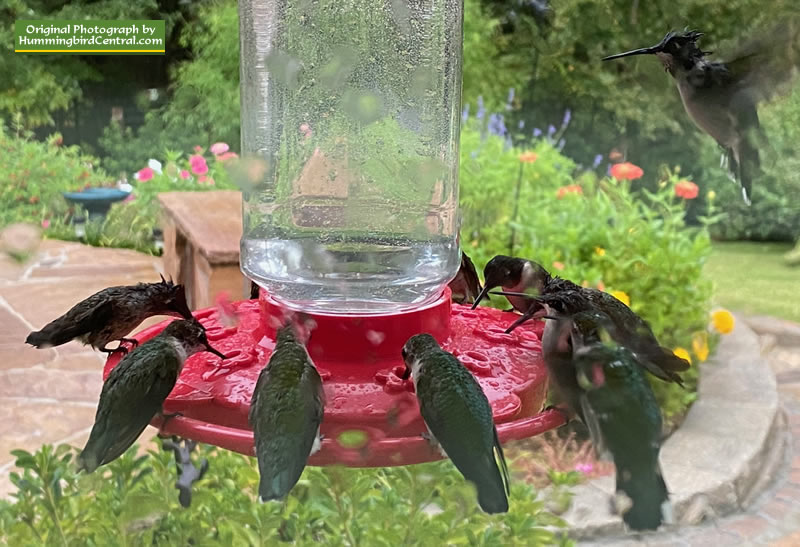 Rain makes Ruby-throats thirsty! Scene in our gardens, September, 2023, approaching peak fall migration. It's crowded, but one more in the top corner is trying to find a spot to feed. |
During migration, a hummingbird's heart beats up to 1,260 times a minute, and its wings flap 15 to 80 times a second. To support this high energy level, a hummingbird will typically gain 25-40% of their body weight before they start migration in order to make the long trek over land, and water.
They fly alone, often on the same path they have flown earlier in their life, and fly low, just above tree tops or water. Young hummingbirds must navigate without parental guidance, or previous flight experience.
Hummingbirds fly by day when nectar sources such as flowers are more abundant. Flying low allows the birds to see, and stop at, food supplies along the way. They are also experts at using tail winds to help reach their destination faster and by consuming less energy and body fat.
Research indicates a hummingbird normally can travel as many as 23 miles in one day. At that rate it can take several weeks to reach their wintering grounds from summer breeding grounds in the northern U.S. or southern Canada. But in certain circumstances, like the journey over the Gulf of Mexico, they can fly for more extended lengths of time, like 22 hours, nonstop!
While some hummingbirds begin their fall migration as early as late July, most don't start their journey south till August or September.
|
Some End Their Fall Migration in the U.S.
Hummingbirds are overwintering on the Gulf Coast in greater numbers than in the past, and many can be found at feeders in South Texas and South Louisiana during mild winters. Others may spend the winter along the warm coastal areas of North Carolina and surrounding areas.
For example, in South Louisiana, several species are often spotted during the winter months, including the Ruby-throated, Rufous, Black-chinned, and Buff-bellied.
A few hummingbird species are year-round residents in the warmer Pacific coastal and southern desert regions of the United States. Among these is the Anna's hummingbird, a common resident from California inland to Arizona and north to British Columbia.
How Long to Leave Up Hummingbird Feeders?
During the fall migration, it is recommended that hummingbird lovers leave up their feeders for about two weeks after they sight their final bird. Just to feed those late-migrating hummers!
Fall Migration Patterns of Common Hummingbird Species
Of the Pacific Northwest hummingbirds, Anna’s is the only one that doesn’t always migrate south to warmer areas in winter.
The Continental Divide is host to the greatest number and diversity of western migrating hummingbirds. A nearly constant high pressure dome called the “Great Basin High” features winds that rotate clockwise and that are followed by the hummingbirds. This provides consistent tail winds to support migration.
Rufous and Calliope Hummingbirds migrate north up the valleys and along the foothills of the Pacific slopes of the western United States, sipping nectar from spring flowers. This route is often called the ”Pacific Flyway” or “floral highway.” They reach the Northwest in early summer.
As the lowland flowers begin to die off, the birds move up in elevation to the alpine meadows of the Rocky Mountains and Sierra Nevada where the flowers are in full bloom. Then they follow the mountains of the Continental Divide south to Mexico in late summer and fall.
Ruby-throated
|
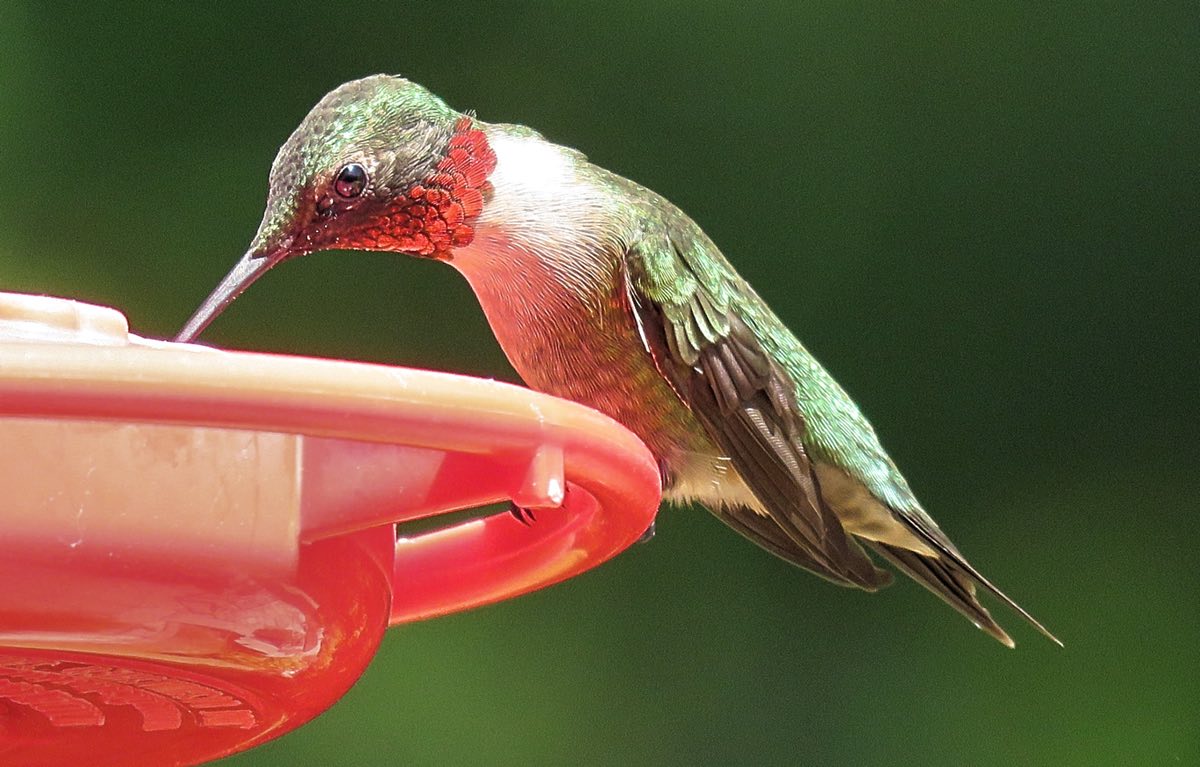 |
Ruby-throated hummingbirds migrate northward from Mexico or Central America, and begin showing up in the United States as early as January in the extreme southern states. Their breeding range extends into several Canadian provinces.
By August and September, their breeding periods are complete, and the hummingbirds begin moving south for the fall migration. They refuel their bodies in the early morning, traveling midday, and foraging again in the late afternoon to maintain their body weight.
August here in Texas brings lots of activity, when we have 10-20 Ruby-throated hummingbirds at a time, with peak numbers happening in early September when we typically spot as many as 35-40 hummingbirds at a time as part of the fall migration.
Ruby-throats gather in Florida, Louisiana and along the South Texas coast in September and October in preparation for the final push to the south, either over the Gulf of Mexico or via an overland route through Mexico and as far south as northern Panama.
In the fall, fewer Ruby-throats cross the Gulf than in spring. Most follow the Texas coast back into Mexico to avoid tropical storms and hurricanes.
Rufous
Selasphorus rufus
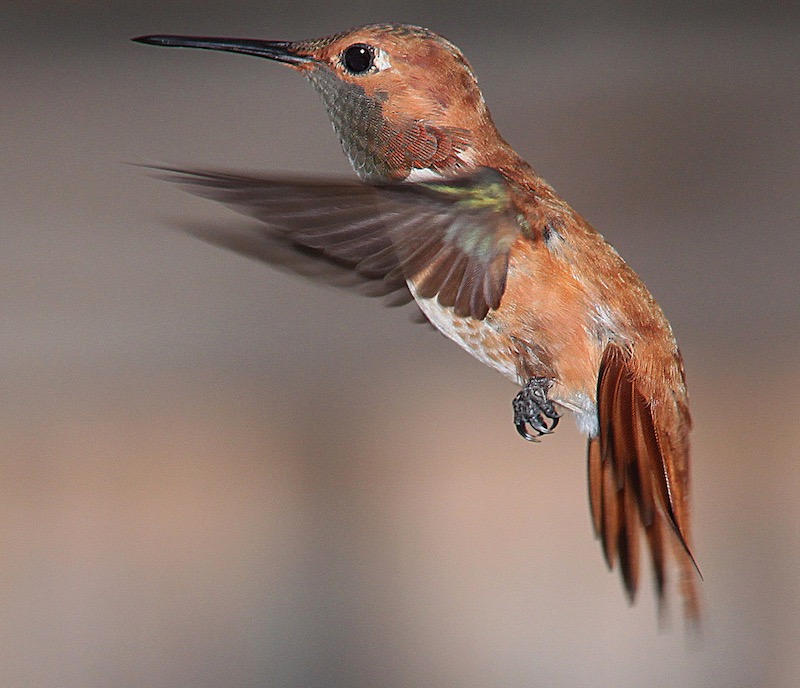 |
Rufous Hummingbirds are wide-ranging, and breed farther north than any other hummingbird, even into southeastern Alaska. They are often seen in the spring in California, summer in the Pacific Northwest and Alaska, and fall in the Rocky Mountains.
They spend their winter non-breeding months in southern Mexico especially in wooded areas in the state of Guerrero. During their long migrations, Rufous Hummingbirds make a clockwise circuit of western North America each year. They move up the Pacific Coast in late winter and spring, reaching Washington and British Columbia by May. As early as July they may start south again, traveling down the chain of the Rocky Mountains.
Actual migration routes vary from year to year and can depend on a number of weather-related conditions and other environmental factors.
Black-chinned
Archilochus alexandri
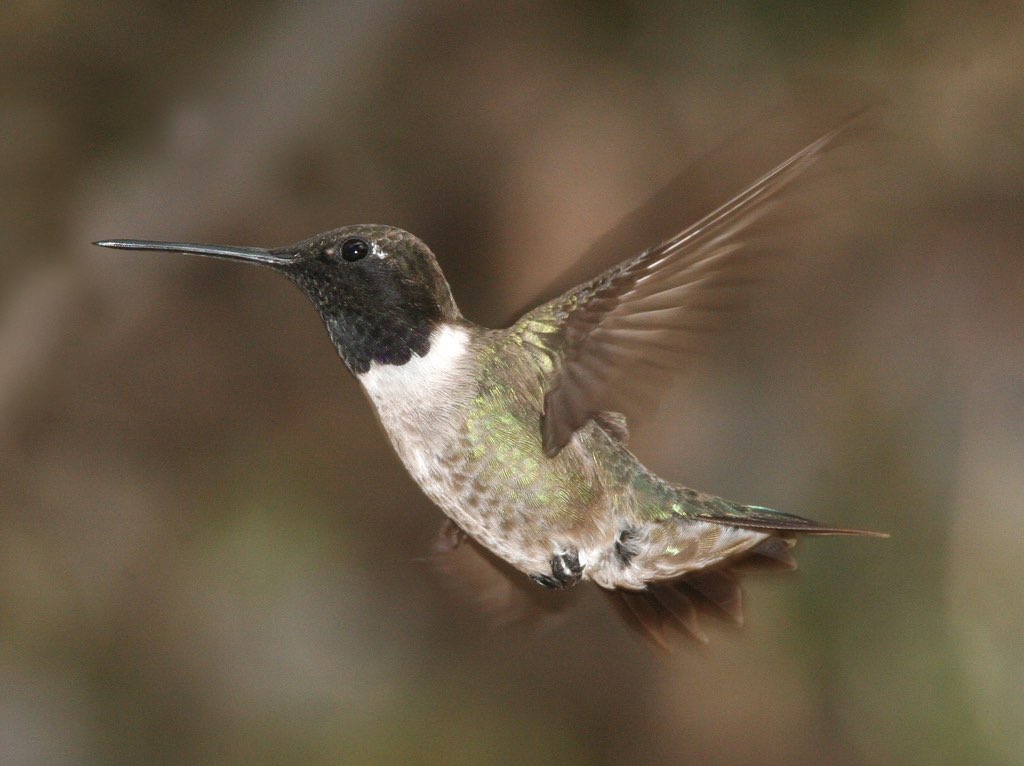 |
The Black-chinned Hummingbird's breeding range stretches from southern British Columbia in Canada through Idaho and Nevada, south to northern Mexico, and from coastal California, Arizona through Texas, where they are relatively common spring and summer residents.
These hummingbirds have also been reported in a number of other states.
They migrate to southern California, southern Arizona, and southern Texas or Mexico for the winter.
Allen’s
Selasphorus sasin
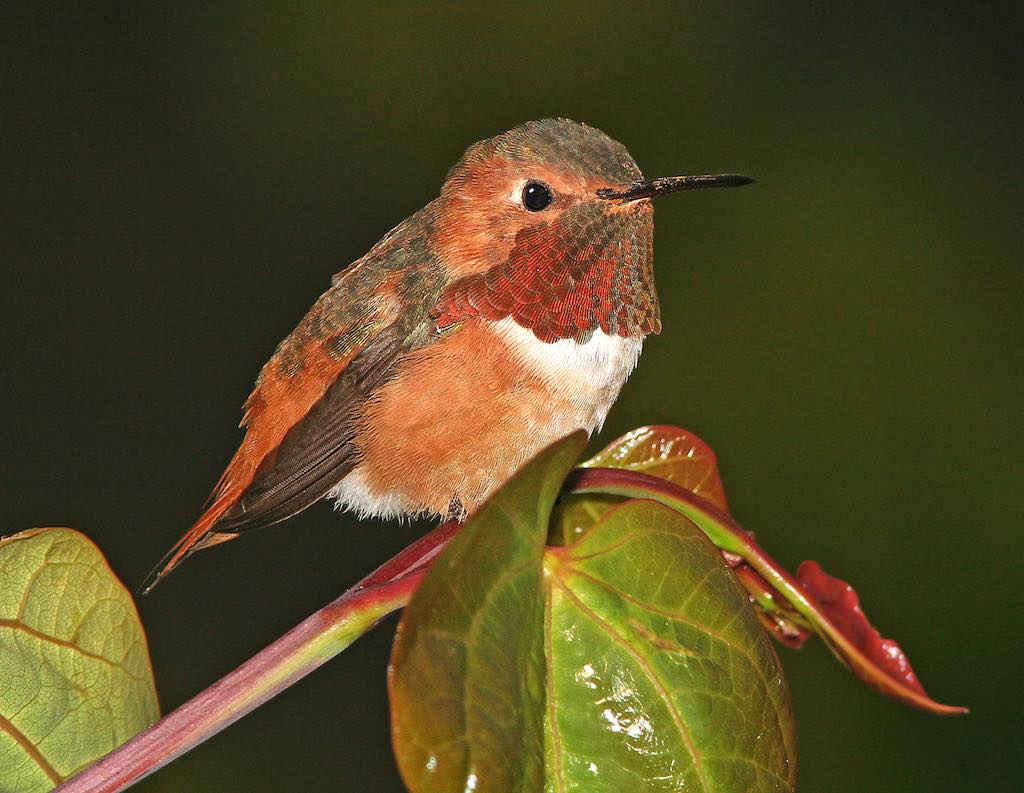 |
Allen's Hummingbirds winter as far south as southern Mexico. They move north up the Pacific Coast in late winter, and south through the mountains in late summer.
A close relative of the Rufous Hummingbird, Allen's has a more limited range, nesting mostly in California.
It has a rufous tail, green back, and dark bill, and is difficult to safely separate from immature Rufous. The male has an iridescent red throat and shiny green back. The female's chin, throat, and chest are a dull white, and the center of throat has a variably sized patch of red feathers.
Anna’s
Calypte anna
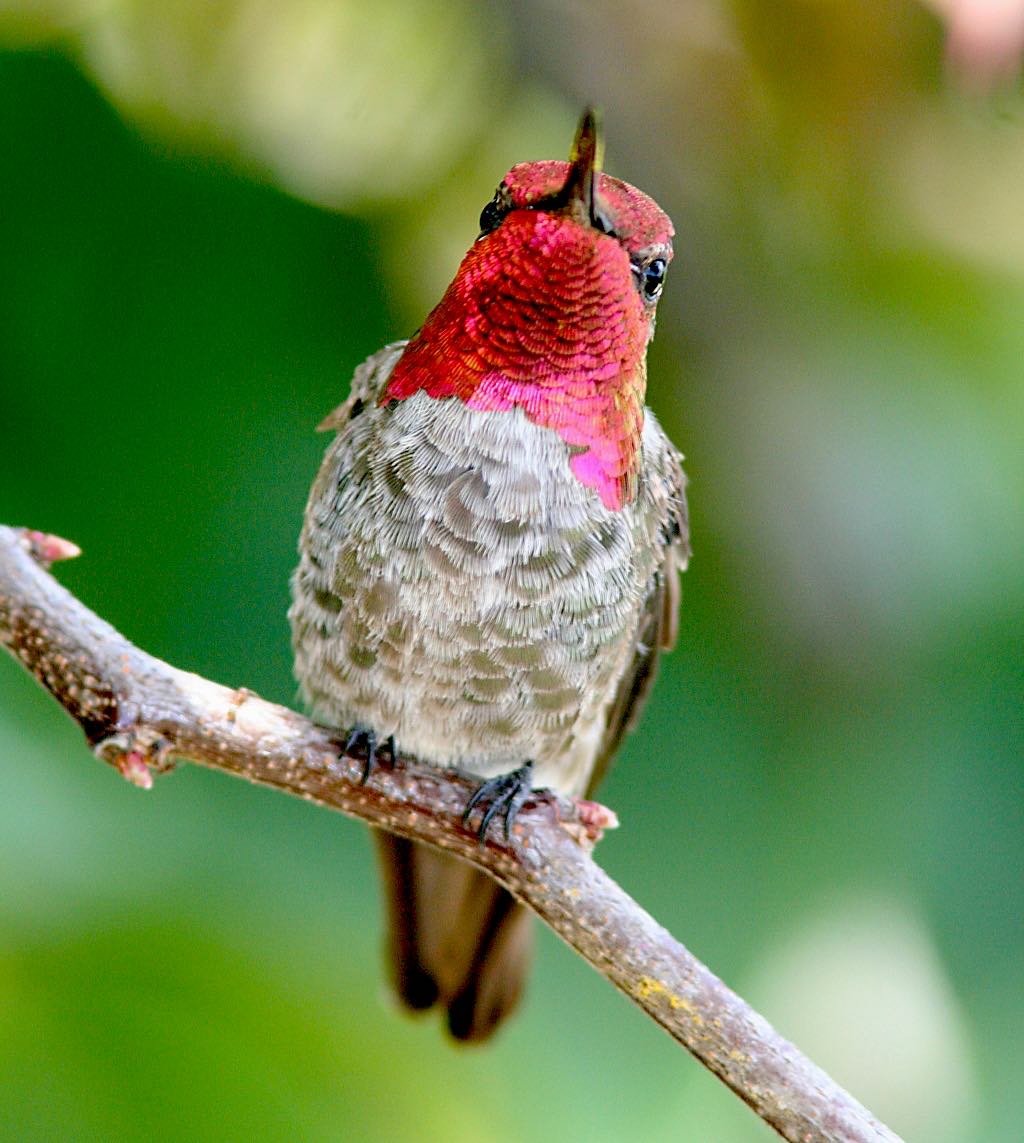 |
Anna’s Hummingbird is one of the most common hummingbirds in its range. The species breeds from Vancouver, Canada south to northern Baja California and east through southern Arizona.
This hardy bird is a permanent resident along the Pacific Coast, staying through the winter in many areas where no other hummingbirds are present.
Anna's hummingbirds are found along the western coast of North America, from southern Canada to northern Baja California, and inland to southern and central Arizona, extreme southern Nevada and southeastern Utah, and western Texas. They tend to be permanent residents within their range, and are very territorial. However, birds have been spotted far outside their range in such places as southern Alaska, Saskatchewan, New York, Florida, Louisiana and Newfoundland.
Anna's hummingbirds have the northernmost year-round range of any hummingbird. During cold temperatures, Anna's hummingbirds gradually gain weight during the day as they convert sugar to fat. In addition, hummingbirds with inadequate stores of body fat or insufficient plumage are able to survive periods of sub-freezing weather by lowering their metabolic rate and entering a state of torpor.
Broad-tailed
Selasphorus platycercus
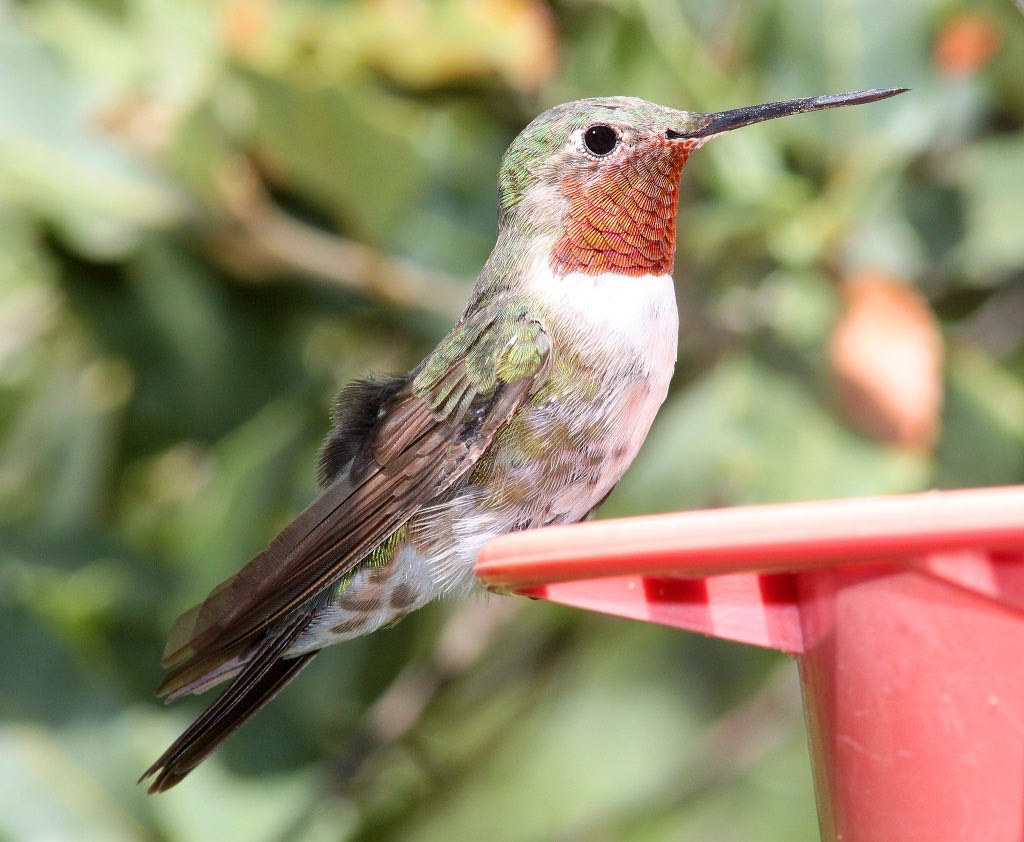 |
Broad-tailed hummingbirds migrate north in the spring leaving behind the non-migrant populations in central Mexico.
During spring migration, males reach southern Arizona in late February or early March, northern Arizona in early April, Colorado in late April to late May, Wyoming in mid-May, and Idaho/Southern Montana by late May.
After breeding, Broad-tailed Hummingbirds start their south-bound fall migration into their winter range in the highlands of Mexico south to Guatemala.
Calliope
Stellula calliope
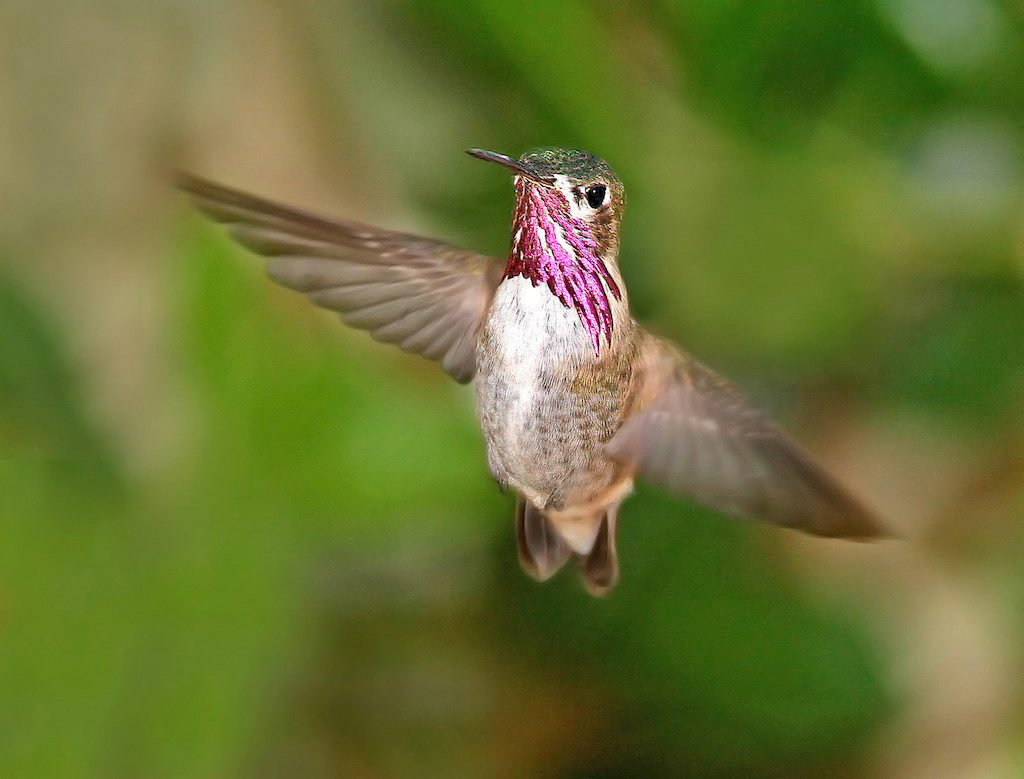 |
Calliope Hummingbirds primarily breed at high elevations in the mountains of northwestern United States and Canada into Alaska.
In Canada, they occur from southern British Columbia and Alberta, and also south to Colorado, Nevada and southern California and Arizona.
During spring and summer they travel through Arizona and New Mexico and northern Mexico, to winter in southwestern Mexico as well as in Guatemala and Belize.
Costa’s
Calypte costae
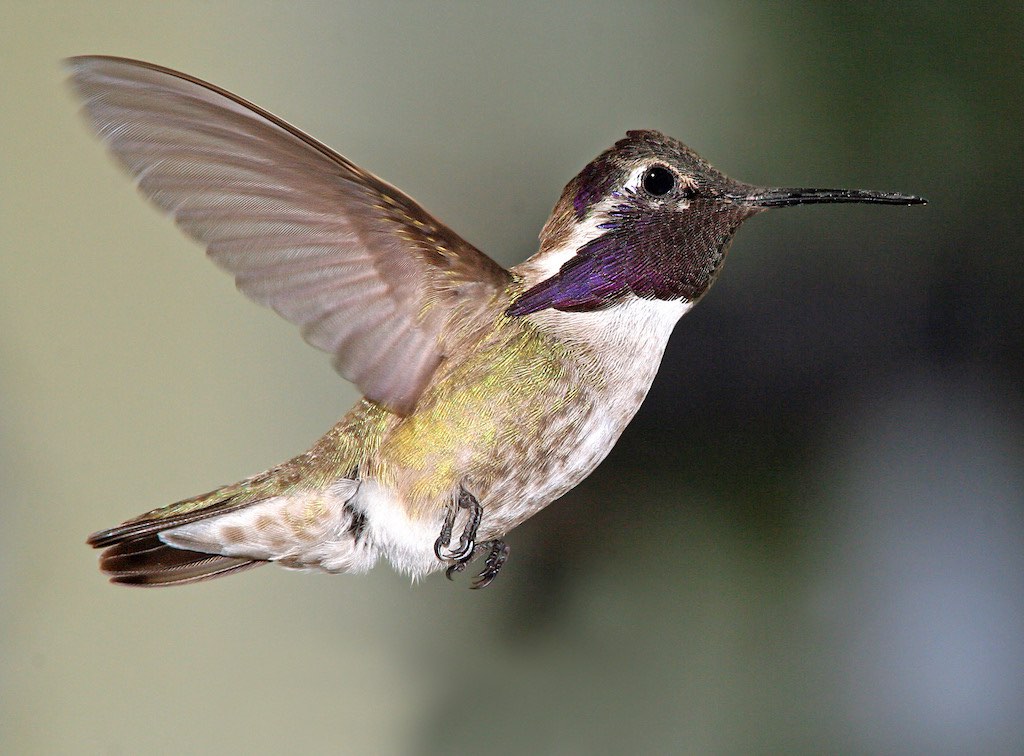 |
Costa's Hummingbirds are small North American desert birds that inhabit the western United States and Mexico, but are known to wander eastward and as far north as Alaska and Canada.
They are closely related to the Anna's Hummingbirds.
Their most common breeding areas are the Mojave Desert, Sonoran Desert and the San Joaquin Valley of California. Their wintering areas include southern California south into Mexico.
And turn up your volume to enjoy their humming and chirping!
 |
|

